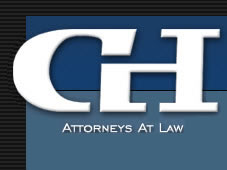Strategic risk is currently a focus of regulatory scrutiny and the board of directors should understand what it is and how to manage it. Strategic risk is the risk to a bank's earnings and capital from making poor business decisions, from not implementing business decisions properly, or from failing to respond to industry changes. For example, strategic risk is increased when a bank offers on a new product or service without having the experienced personnel or the appropriate infrastructure in place first. Strategic risk is also increased when a bank embarks on a new venture without conducting adequate due diligence or without having appropriate risk controls established.
The board of directors can assess the level of strategic risk by reviewing the bank's goals, along with the strategies and implementation plans to meet those goals. The review should include an analysis of the resources available to meet the goals including the sufficiency of bank's management team, technology, operations and communications. External factors that might affect successfully meeting the bank's goals should also be analyzed including changes in the economy, taxes, regulatory environment, competition and technology, just to name a few.
Strategic risk cannot truly be managed, however, unless the board of directors understands the total risks that exist across the entire bank. For example, the board cannot appropriately decide to offer a new lending product without considering the risk levels present in the bank's technology, liquidity and capital adequacy. Similarly, the board cannot appropriately decide to expand its footprint without considering the risk present in the bank's current level of operations. If the bank does not have sufficient management expertise, or if the bank's operations and technology lack the ability to handle the new business, strategic risk is increased by being unable to properly implement this business decision.
Strategic risk, therefore, is necessarily a component of the broader analysis called enterprise risk management or "ERM." ERM is the assessment and management of risk across the whole bank or enterprise. If the bank has not yet conducted an ERM assessment, now is the time to begin the process. While there is no one right way to conduct an ERM assessment, the depth and breadth of the review will necessarily depend on such things as the complexity of the bank, the types of products and services it offers, and the technology currently in use.
One place to begin the ERM assessment is to identify and assess risk across the enterprise using the nine categories of risk outlined by the Office of the Comptroller of the Currency, which include the following:
- Credit risk: the risk to earnings and capital from the failure to be repaid on a loan;
- Interest rate risk: the risk to earnings and capital from movements in interest rates;
- Price risk: the risk to earnings and capital from changes in the value of investment portfolios;
- Transaction risk: the risk to earnings and capital from fraud, error or inability to deliver products or services;
- Reputation risk: the risk to earnings and capital from negative public opinion, gossip, rumors or press reports;
- Compliance or legal risk: the risk to earnings and capital from violations of law, regulation, internal policies or ethical standards;
- Strategic risk: the risk to earnings and capital from adverse business decisions;
- Foreign exchange risk: the risk to earnings and capital from the conversion from one currency to another; and
- Liquidity risk: the risk to earnings and capital of failing to meet obligations as they come due.
These nine risk categories are intertwined. For example, a growing exposure to interest rate risk could affect credit, price and liquidity risks. Likewise, the potential noncompliance with certain laws and regulations (compliance risk) could affect not only reputation risk, but also liquidity risk.
Conducting an ERM analysis is no small task. But once it is completed, the results may be utilized in several ways. First, the board of directors should discuss how the current risk levels should be managed or reduced in order to meet the bank's profitability goals. The negative impact to a bank's profits from increasing loan losses or narrowing margins is obvious. But what about the negative impact on profits due to Fair Lending compliance problems? Second, the ERM analysis should be factored into the strategic plan. Discussions at the annual strategic planning retreat could address such questions as: Are the present products and services the right ones for the board's risk appetite? Is the level of risk within the tolerances established by the board of directors or should these tolerances be adjusted or the risk reduced? Third, the ERM analysis should be factored into the bank's capital planning in order to more knowledgeably determine how much capital will be needed over the next five years considering all of the risks present in the bank.
Making business decisions without knowing all of the risks present in the bank is a tricky proposition for the board of directors and can increase the level of strategic risk, as well as harm the future profitability of the bank. Performing an enterprise risk management analysis is time-consuming, but the results can be critical for the board in moving the bank forward in a profitable and sound way. Utilizing the results of a full enterprise risk management assessment prior to making any major business decisions will improve the bank's strategic risk and will enhance measurably the bank's chances of meeting or exceeding its strategic goals.
Assessing the bank's strategic risk, armed with valuable information from an ERM assessment, will not only bode well for the bank's next examination, but will assist the board in making sound business decisions in the future.










